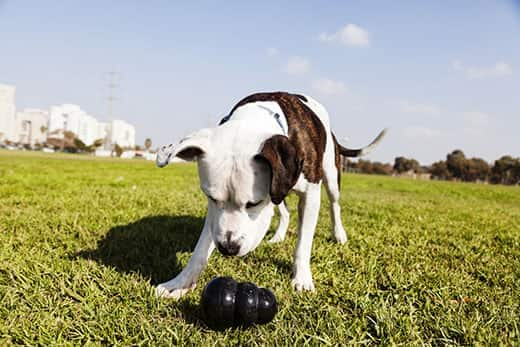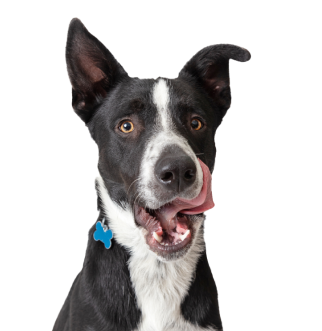
-
Find the right food for your pet
Take this quiz to see which food may be the best for your furry friend.
Find the right food for your pet
Take this quiz to see which food may be the best for your furry friend.
Featured products
 Puppy Small & Mini Chicken & Brown Rice Recipe
Puppy Small & Mini Chicken & Brown Rice RecipeVital nutrients to support 5 essential building blocks for lifelong health
Shop Now Adult Healthy Mobility Small Bites Chicken Meal, Brown Rice & Barley Recipe Dog Food
Adult Healthy Mobility Small Bites Chicken Meal, Brown Rice & Barley Recipe Dog FoodAdvanced nutrition to support hip & joint health from day 1
Shop Now Adult Sensitive Stomach & Skin Small & Mini Chicken Recipe Dog Food
Adult Sensitive Stomach & Skin Small & Mini Chicken Recipe Dog FoodHill's Science Diet Sensitive Stomach & Skin Small & Mini dry dog food is tailored nutrition for Small & Mini dogs while being gentle on stomachs. Nourishes skin & promotes a lustrous coat.
Shop NowFeatured products
 Sensitive Stomach & Skin Chicken & Beef Dinner
Sensitive Stomach & Skin Chicken & Beef DinnerGourmet daily nutrition, carefully made. Tasty chunks with chicken & beef in a decadent gravy. Supports digestive health, nourishes skin and promotes a lustrous fur.
Shop Now Adult 11+ Chicken Recipe Cat Food
Adult 11+ Chicken Recipe Cat FoodSupports brain health and beautiful fur in mature cats
Shop Now Adult Perfect Weight Salmon & Vegetable
Adult Perfect Weight Salmon & VegetableOver 70% of cats lost weight within 10 weeks when fed this nutrition
Shop Now -
Dog
- Dog Tips & Articles
-
Health Category
- Weight
- Food & Environmental Sensitivities
- Urinary
- Digestive
- Joint
- Kidney
-
Life Stage
- Puppy Nutrition
- Adult Nutrition
- Senior Nutrition
Cat
- Cat Tips & Articles
-
Health Category
- Weight
- Skin & Food Sensitivities
- Urinary
- Digestive
- Kidney
-
Life Stage
- Kitten Nutrition
- Adult Nutrition
Featured articles
 Water
WaterDiscover why water is the most important nutrient for your dog or cat to live a healthy life. Find out how much water your pet should consume each day.
Read More Pet Food Storage Tips
Pet Food Storage TipsDiscover how and where to store your dry, as well as canned, dog and cat food. Learn how to find the "best before" dates on all Hill's pet food packaging.
Read More The Incredible Science Behind Your Pet's Microbiome
The Incredible Science Behind Your Pet's MicrobiomeLearn what a pet's microbiome is, how it contributes to your pet's gut & overall health, and why nutrition is important in maintaining healthy microbiomes.
Read More -
Find the right food for your pet
Find the right food for your pet


If you're reading this, there's a good chance that you're right-handed. According to WorldAtlas, only 10 percent of the human population are lefties. But have you ever wondered if dogs have dominant paws like humans have dominant hands? And are dogs right- or left-handed, on average? Find out how pet researchers — and you too! — can determine whether a dog is a righty or lefty.
Understanding Paw Preference
Like humans, all dogs are different, so there's no definitive answer to the question as to whether or not a dog is left or right-pawed Another reason why it's hard to nail down statistics is that dogs aren't formally tested for dominant paws. However, many experts believe that dogs have a more equal chance than humans of being either righties or lefties. And while many dogs have dominant paws, many also have no preference between their right and left paws.
How Researchers Determine Paw Preference
Two of the most popular ways to determine a dog's paw preference is through the Kong test and the first-stepping test, both of which have been used in scientific studies. Here's how they work.

The Kong Test
In a Kong test, a dog is given a rubber, cylindrical dog toy called a Kong, which is filled with food. You then watch the dog to see how many times they use each paw to hold the toy while trying to get the food out. According to the American Kennel Club, Kong tests tend to show that dogs are equally likely to be left-pawed, right-pawed and to have no preference.
The First-Stepping Test
You can also determine a dog's paw preference through the first-stepping test. With this test, you watch to see which paw a dog puts down first as they prepare to walk. This indicates which paw they prefer. According to the author of a study in the Journal of Veterinary Behavior, the first-stepping test shows more significant paw preferences than the Kong test. This particular first-stepping test revealed a strong preference among dogs for the right paw.


Tasty Tips
What About My Dog?
If you'd like to know which paw your own pup prefers, try an at-home experiment. You can either use one of the scientist-approved tests or create a new one your pet might like more. For example, when you ask your dog to give you their paw, do they always extend the same one? What happens if you hide a treat in your hand? Does your dog extend the same paw to touch the hand that's holding the treat? Games like this can help you determine if your pet has a paw preference.
Keep in mind that if you want accurate results, you'll have to perform a paw preference test over an extended period of time. Both the Kong test and the first-stepping test require 50 observations for accurate data.
Whether you decide to take a serious, scientific approach or not, your dog is sure to love participating in a paw preference test — especially if it involves food!


Erin Ollila believes in the power of words and how a message can inform—and even transform—its intended audience. Her writing can be found all over the internet and in print, and includes interviews, ghostwriting, blog posts, and creative nonfiction. Erin is a geek for SEO and all things social media. She graduated from Fairfield University with an M.F.A. in Creative Writing. Reach out to her on Twitter @ReinventingErin or learn more about her at http://erinollila.com.
Related products

Advanced nutrition to support hip & joint health from day 1

Hill's Science Diet Sensitive Stomach & Skin Small & Mini dry dog food is tailored nutrition for Small & Mini dogs while being gentle on stomachs. Nourishes skin & promotes a lustrous coat.

For the unique nutritional needs of mature Small & Mini dogs

Vital nutrients to support 5 essential building blocks for lifelong health
Related articles

Learn basic steps & precautions for treating a cut on your dog, including what you can put on the cut, and when you should take them to the vet.

Discover how the field of dog science is giving us more and more insights into the inner workings of our furry best friends.

Your dog's coat and skin are a big part of your dog's overall health. Ensure you keep your dog's coat healthy, by following these simple tips.

Learn how dogs with sensitive skin can have special dietary needs, how they can develop over time in a healthy dog, and how Hill's dog food can help.

Put your dog on a diet without them knowing
Our low calorie formula helps you control your dog's weight. It's packed with high-quality protein for building lean muscles, and made with purposeful ingredients for a flavorful, nutritious meal. Clinically proven antioxidants, Vitamin C+E, help promote a healthy immune system.
Put your dog on a diet without them knowing
Our low calorie formula helps you control your dog's weight. It's packed with high-quality protein for building lean muscles, and made with purposeful ingredients for a flavorful, nutritious meal. Clinically proven antioxidants, Vitamin C+E, help promote a healthy immune system.

